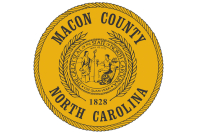Can I move?
 Remember the scene in “Butch Cassidy and the Sundance Kid,” where the Kid was asked by an old miner (I think Butch and the Kid were applying for positions as payroll guards) if he could shoot, and tosses a small object on the ground 20 or 30 feet in front of them? Kid holstered his sidearm and prepared to draw and the old miner stopped him, saying something like no, no, no, I just want to know if you can hit anything with that.
Remember the scene in “Butch Cassidy and the Sundance Kid,” where the Kid was asked by an old miner (I think Butch and the Kid were applying for positions as payroll guards) if he could shoot, and tosses a small object on the ground 20 or 30 feet in front of them? Kid holstered his sidearm and prepared to draw and the old miner stopped him, saying something like no, no, no, I just want to know if you can hit anything with that.
The Kid, with pistol drawn, takes aim and fires, missing the mark by a foot or so. The miner turns to walk away and Kid says, “Can I move?” The miner is standing there puzzled and the Kid draws, falls to one knee and obliterates the target in two quick shots, sealing the deal.
Birders fall, loosely, into two groups, with overlap in certain circumstances. One group is what the miner was looking for — they see the target and take aim, conscious of their target and the process, drawing a bead at a particular point and squeezing off the round. The other group is like the Kid, reflex and intuition take over, the process is unconscious, the round is automatic. There is no right way or wrong way; people just process information differently.
The first group sees a bird (target;) they take aim — focusing, the bird is small, dark on top yellow below with black streaks, black eye patch, large white wing patch, black tail with wide white band; and they squeeze the round — magnolia warbler. The second group sees a bird, they focus, instinct takes over and bam — magnolia warbler. I’m pretty sure the second group digests the same field characteristics as the first, they’re just not aware of the process.
I am firmly ensconced in that second group and am often reminded of it in the field, especially when leading groups. I was leading a group on the Blue Ridge Parkway a few years back and a little bird flew across the road in front of us as we were driving. “What was that?” someone asked and I replied, “chestnut-sided warbler.”
“How could you tell?”
Related Items
My initial response was, “It looked like a chestnut-sided warbler,” and I immediately realized that wasn’t helpful in any way. So I replayed the scene in my mind, like movie frames — a little bird (warbler-sized) approaching from the left; dark above, white below; and bam, right in front of me (freeze-frame) was the clincher — the little bird with its wings up clearly showing its chestnut-colored flanks and bright yellow pin-cushion crown. That was what I had processed subconsciously to get to chestnut-sided warbler. Now I always carry a field guide with me when leading groups so when someone asks, “How can you tell?” I can open the guide and point to the distinguishing field marks.
I know excellent birders from both camps. One of the best “literal” birders I have ever birded with is Fred Alsop. Dr. Alsop is an ornithologist, author and professor at East Tennessee State University. It is a treat to be in the field with Fred. As soon as he gets a bird in his bins he begins listing the field marks — it’s about the only time I process consciously because I’m listening to him and it’s a great learning experience.
And if you’re an honest birder, there’s always something to learn. You learn from other birders and you learn from the birds by observing them in the field. The only birders that never make a wrong call are the ones that only bird alone.
Now, I need to get outside and move.
(Don Hendershot is a writer and naturalist. He can be reached a This email address is being protected from spambots. You need JavaScript enabled to view it..)









